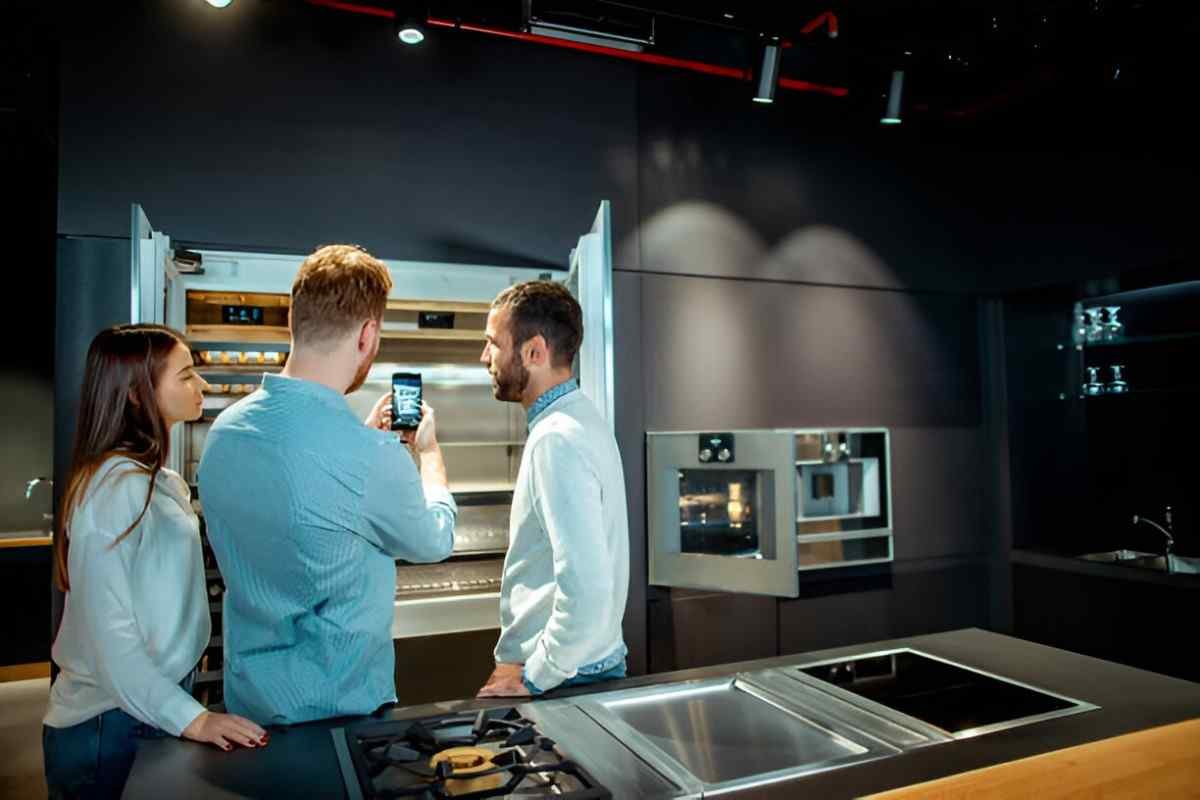When buying a refrigerator, it can feel like stepping into a maze of endless options. Different sizes, styles, features, and price points create a confusing landscape, but with the right approach, selecting the perfect refrigerator can be straightforward. In this guide, I’ll help you navigate the process with ease. We’ll explore key factors, compare models, and consider essential tips to make an informed decision.
Table of Contents
Understanding Your Needs
The first step in choosing a refrigerator is understanding your household’s unique requirements. Consider the following:
1. Household Size
How many people will use the refrigerator? Larger households generally require more storage space.
| Household Size | Recommended Capacity (Cubic Feet) |
|---|---|
| 1-2 people | 14-18 |
| 3-4 people | 19-24 |
| 5+ people | 25+ |
2. Kitchen Space
Measure your available kitchen space. Note height, width, and depth. Don’t forget clearance for doors to swing open and ventilation.
3. Lifestyle and Eating Habits
Do you cook at home often or rely on takeout? Frequent cooks may need more freezer and fresh food storage space. If you host gatherings, you’ll need enough room for party platters and beverages.
Types of Refrigerators
Choosing the right type depends on your kitchen layout and personal preference. Here’s a breakdown of the most common styles:
1. Top-Freezer Refrigerators
These models feature a freezer compartment above the fridge. They’re affordable and energy-efficient.
| Pros | Cons |
|---|---|
| Budget-friendly | Limited storage for tall items |
| Easy-to-access freezer | Basic design |
2. Bottom-Freezer Refrigerators
The freezer sits below, allowing fresh food to be at eye level. These are great for those who use the fridge more than the freezer.
| Pros | Cons |
|---|---|
| Convenient fresh food access | Higher price than top-freezer |
| Better storage organization | Freezer less accessible |
3. Side-by-Side Refrigerators
This design splits the appliance vertically, with one side for the freezer and the other for fresh food.
| Pros | Cons |
|---|---|
| Easy access to both compartments | Narrow compartments |
| Ideal for small kitchens | Less energy-efficient |
4. French Door Refrigerators
French door models have two doors for the fridge and a bottom freezer drawer. They offer modern aesthetics and excellent storage flexibility.
| Pros | Cons |
|---|---|
| Spacious and flexible | Higher price point |
| Energy-efficient | Requires more kitchen space |
5. Compact Refrigerators
Perfect for dorm rooms or small apartments, these refrigerators save space but lack capacity.
| Pros | Cons |
|---|---|
| Space-saving design | Limited storage |
| Affordable | Not suitable for families |
Key Features to Consider
When comparing refrigerators, certain features can make a significant difference in usability and convenience.
1. Energy Efficiency
Look for models with an Energy Star rating. Energy-efficient refrigerators reduce electricity bills and environmental impact.
2. Shelving and Compartments
Adjustable shelves and clear bins help with organization. Spill-proof shelves can make cleaning easier.
3. Cooling Technology
Some refrigerators come with advanced cooling technologies, like dual evaporators and air filtration, which maintain consistent temperatures and minimize odors.
4. Water and Ice Dispensers
External dispensers add convenience but can increase maintenance needs. Internal dispensers offer a cleaner look but require opening the door frequently.
5. Smart Features
Wi-Fi-enabled refrigerators allow you to control settings remotely, receive maintenance alerts, and even monitor food inventory.
Comparing Refrigerators
Here’s a comparison of popular models to help illustrate key differences:
| Feature | Model A | Model B | Model C |
|---|---|---|---|
| Type | French Door | Side-by-Side | Top-Freezer |
| Capacity (Cubic Feet) | 25 | 22 | 18 |
| Energy Star Certified | Yes | Yes | Yes |
| Ice/Water Dispenser | Yes (External) | Yes (Internal) | No |
| Smart Features | Yes | No | No |
| Price Range ($) | 2,000-3,000 | 1,500-2,500 | 800-1,200 |
Budgeting for Your Refrigerator
Setting a budget early on is essential. Here’s a rough guideline:
| Price Range | Features You Can Expect |
|---|---|
| $500-$1,000 | Basic models with fewer features |
| $1,000-$2,000 | Mid-range options with added features |
| $2,000+ | High-end models with smart features |
Maintenance Tips for Longevity
To get the most out of your refrigerator, regular maintenance is key:
- Clean the Coils: Vacuum the condenser coils every six months to ensure efficiency.
- Check Door Seals: Tight seals prevent cool air from escaping.
- Set the Right Temperature: Keep the fridge at 37°F and the freezer at 0°F.
- Organize Efficiently: Avoid overloading, as it can strain the motor.
Conclusion
Choosing the best refrigerator doesn’t have to be overwhelming. By evaluating your needs, understanding different types, and comparing features, you can find a refrigerator that fits your lifestyle and budget. Remember to measure your space, prioritize energy efficiency, and factor in long-term maintenance. With this guide, I hope you feel confident in making your decision.





